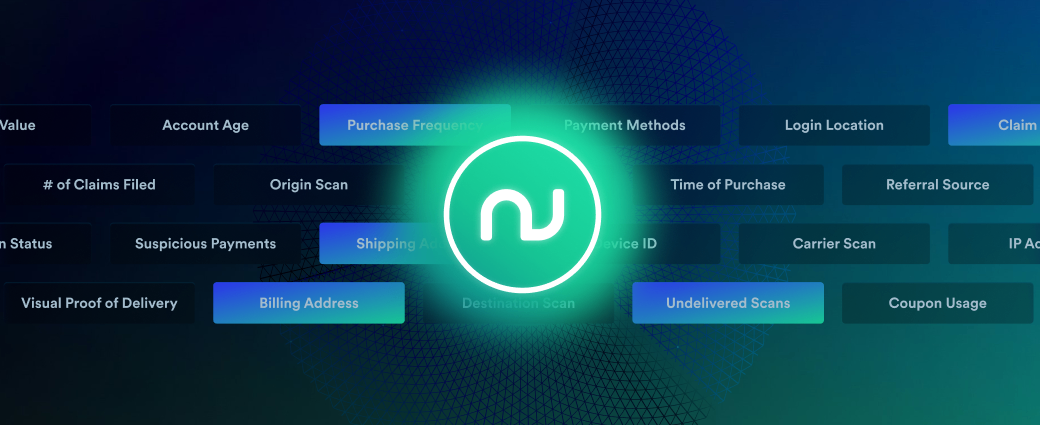
AI-powered delivery date estimates to boost conversion
Give shoppers peace of mind and protect and grow your bottom line
Personalized tracking experiences to build brand loyalty
Returns and exchanges management to mitigate fraud and reward best customers
Proactive communication to drive customer lifetime value
Delivery claim management to tackle fraud and build trust
Machine Learning Is Delivering More Personal Retail Experiences

Shoppers are becoming more demanding. They want integrated experiences between digital and physical shopping. They want value. They want efficiency. Machine Learning (ML) is the most accurate, cost-effective tool to help retailers meet those expectations.
ML gives retailers insight into customer behavior, optimal pricing, the supply chain, and fulfillment. In this article, we’ll discuss five use cases for applying ML in ecommerce.
Marketing and advertising
Dynamic creative optimization personalizes advertisements based on information about a customer—typically gleaned from previous browsing habits or the customer’s shopping cart. It gives retailers the data they need to advertise specific products in a specific way based on the customer’s likely preferences. For example, an insulated bottle may be touted for its ability to keep water cold for a shopper in Florida, while the same bottle could be promoted for keeping coffee hot for a shopper in Vermont.
Studies show that customers actually prefer these customized experiences:
- 80% of consumers are more likely to make a purchase from a brand that provides personalized experiences
- 74% of customers feel frustrated when website content is not personalized
- 63% of consumers will stop buying from brands that use poor personalization tactics.
By removing human bias from advertising decisions, ML helps retailers connect with customers to meet their needs.
Emotional responsiveness technology
Through ML, retailers can design more personalized—and profitable—retail experiences by picking up on subtle customer cues.
Meta, for instance, holds multiple emotion-based AI patents that can gauge a user's emotional state based on how they interact with a keyboard, mouse, touchscreen, or other input device by analyzing typing speed, how hard keys are pressed, or the nature of gestures on a touch screen, location, device movement, and other factors. While Meta may be a social media company, it makes most of its money through advertising—$116.61 billion in 2022. Its emotion-based technology can help retailers target customers who have shown interest in a product across multiple platforms to complete the sale, or stop serving an ad to a customer who’s clearly not interested.
Retailers can also employ emotional responsiveness data through their own channels to reach customers. That includes analyzing bounce rates on product pages, the amount of time a customer spends reviewing photos or using enhanced viewing features like zoom or 360-views, and how frequently the customer returns to the same product page. Those data points can inform whether a retailer targets the customer with the same product in advertising, or even offers a discount to incentivize the purchase.
Dynamic pricing models
Haggling is one of the oldest practices in sales; in ecommerce, it becomes a one-sided art form known as dynamic pricing. By employing data points to adjust the price of a product to the market conditions or the customer’s interest level, retailers can find the right price to close the transaction.
For example, if a customer abandons items in their cart, they might receive an email with a discount code reminding them of what they left behind. This is one of the areas where ecommerce has a clear advantage over brick-and-mortar: Most real-life sales associates don’t have the bandwidth or authority to offer discounts to customers who are on the fence about making a purchase, but retailers can set algorithmic rules in ecommerce for price elasticity.
Data shows that this strategy is successful: McKinsey reports that its work with dynamic pricing has helped clients improve sales growth 2-5% percent and margin growth 5-10%.
Demand forecasting
ML is more efficient in demand forecasting than humans alone. It can process retail-scale data sets, and incorporate external factors, (like weather, civil unrest, and labor disputes), to create accurate, granular short- and long-term forecasts.
While time-series forecasting is a long-accepted retail practice, ML-based demand forecasting is often more accurate. That’s because time-series models can only apply past patterns to future demand, but ML tries to define the actual relationship between variables and associated demand patterns.
Time-series forecasting, for example, might predict that demand for beach supplies would be higher when Independence Day falls on a Monday or Friday, creating a three-day weekend, than when it falls in the middle of the week. ML can further refine that data based on factors like storm systems or heat waves.
From a logistics standpoint, retailers still need time to adjust the supply chain based on the data, but ML demand forecasting gives them a head start in sending inventory to the location where there is likely to be the highest demand. For brick-and-mortar, that means customers see stocked shelves when they visit their local stores. For ecommerce, it can mean faster fulfillment and happier customers.
Leveraging returns data
On a macro level, retailers can use returns data to inform decisions about their assortment, suppliers, and logistics partners. On a micro level, ML can use that data to customize product recommendations and offer promotions to individual customers.
This type of personalization is particularly compelling in sectors that traditionally see higher returns, like apparel and shoes. If a customer has repeatedly returned items because they are too small, a retailer could include user-specific messaging on the product page to indicate a predicted size, (e.g., “Based on your past purchases, we recommend a size 8”). Similarly, the retailer might create a special rule to offer free, accelerated shipping for VIP customers who frequently return items that arrive too late.
Approximately 81% of customers research a product online before making a purchase. Collecting and utilizing data from the exploratory phase of “want” through the lifecycle of the purchase—and possible return—allows retailers to drive sales and customer loyalty by delivering a personalized experience for shoppers. ML is taking the guesswork out of customer interactions and helping retailers deliver exactly what shoppers need.
























